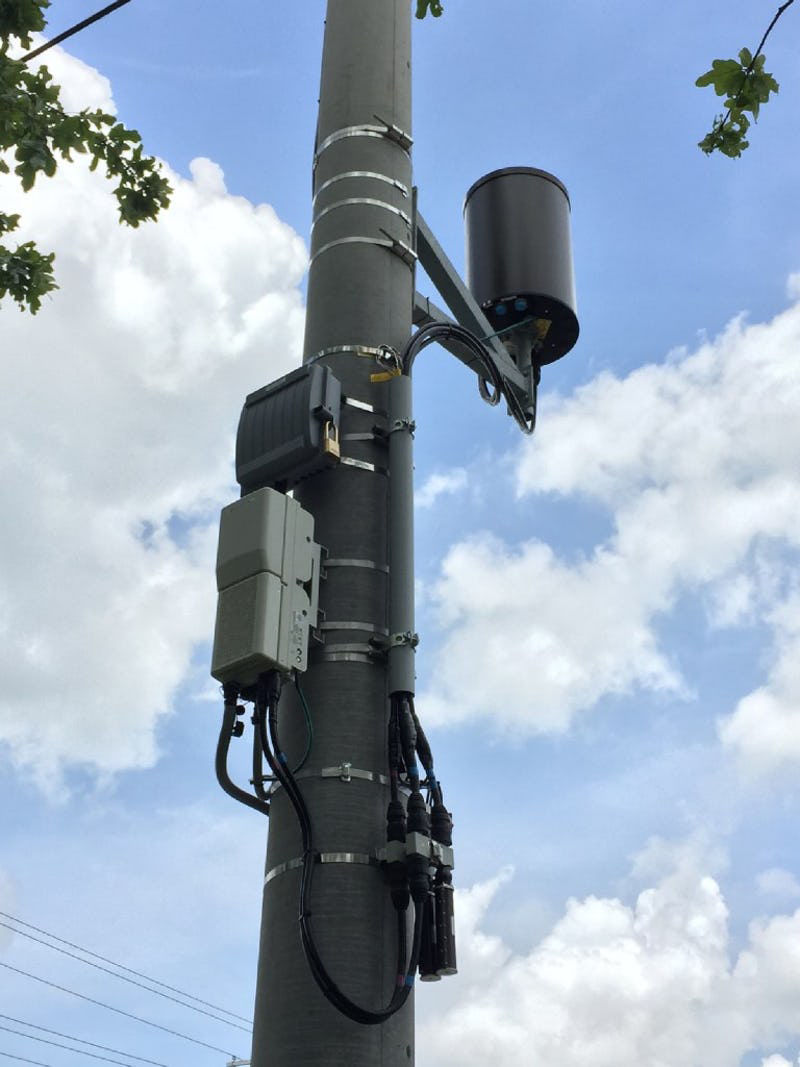If you've ever wandered through a town and spotted tiny cell towers for 5G on street light poles. They look like little boxes however, they're actually transmitting wireless signals from mobile providers to your phone.
They are replacing the larger specially-designed cell towers. While they're not as noticeable however, they could cause issues for users.
The of the FCC's Radiation Exposure Thresholds
The FCC's Radiation Exposure Thresholds define the safe limit at which one can expose to electromagnetic energy generated by wireless devices. The exposure limits are based upon scientific research that prove that electromagnetic energy could be harmful to human health.
The absorption rate specific (SAR) is an indication of the radiofrequency energy taken up by tissues. It's usually 1.6 Watts per kilogram calculated over one gram of tissue.
Since 5g is able to transmit at higher frequencies and has the potential to increase the intensity of energy on the skin as well as other body parts. This could result in a wide range of possible harms, like the formation of skin disorders such as dermatitis, cataracts, and skin cancer.
Due to the possible negative effects of 5G radiation, PSU has chosen to create a general maximum power density of four mW/cm2 based on the average over 1 cm2, and never exceeding 30 minutes for the entire 5G spectrum at 3000 GHz. This limit for localization is in line with the maximum SAR spatial-average of 1.6 W/kg, which is averaged over 1 grams of tissues at six GHz.
The FCC's Maximum Exposure Thresholds
If you've ever operated a cell phone, you're probably aware that the safest range from the tower is at least 400 meters. safe distance from cell tower is because the power of transmission from cell towers increases drastically the further the tower is.
While it sounds like a good idea but the truth is that people who live close to towers could be more susceptible to health issues. For instance, a study conducted in 2014 in India discovered that those living within 50 meters of cell towers experienced significant more health issues than those who lived farther distance from them.
This study showed that residents who moved into areas farther away from cell towers noticed their symptoms improve within a couple of days. Studies have also revealed that exposure to high levels of radiofrequency electromagnetic fields (EMFs) can lead to brain tumors, cancer, and other health problems.
This is because RF radiation, which is utilized for wireless communication, has the ability to penetrate the human body's outer layer of skin. It is crucial to know since the skin serves as a barrier to protect against mechanical injury, infection caused by pathogenic microorganisms and entry of toxic substances. The skin is the largest organ in the human body. It is responsible for maintaining the integrity of other organs.

The FCC's Minimum Exposure Thresholds for the Minimum Exposure
The FCC's Minimum Exposure Thresholds are based on a variety of assumptions that are not supported by scientific evidence. They include the false belief that exposures to RF radiation are safe due to minimal radiation penetration in the human body (i.e. thermal heating of tissue).
The assumption is also ignoring the deeper penetration of the ELF elements of modulated radio signals as well as the effects on the body of short bursts caused by RF pulses. These assumptions are not in line with current knowledge of the biological consequences of RF radiation. As such, they should not be considered for health protection exposure guidelines.
In what is a safe distance from a cell tower to that, ICNIRP and FCC are limiting their maximum radiation limits for local peak SARs, based on the maximum speed of spatial absorption (psSAR), which can be described as an inadequate dosimetric tool to assess the amount of radiation exposure. In particular the psSAR tool is not accurate when frequencies exceed 6 GHz. Additionally, psSAR hasn't been evaluated for RF radiation with co-exposure to other environmental agents such as sunlight. In the event of interactions, RF radiation and other agents in the environment could produce synergistic or antagonistic impacts. This can lead to an increased risk of negative health effects. For safe distance from cell tower , co-exposure to RF radiation with sunlight may raise the chance of developing skin cancer and exacerbate other skin diseases such as acne.
